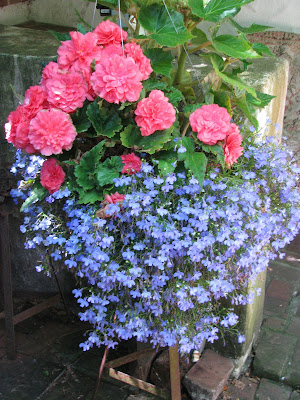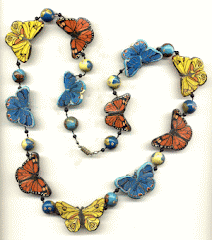
The
Sunday Scribblings prompt is "Indulgence". Follow link to participating blogs.
Yesterday was my son Stan's birthday. He and his wife, Dianne, have been here visiting - actually taking care of me - shopping, meals, gardening, taking out the trash etc. - and I suppose that I could count that as a kind of personal indulgence. When they leave tomorrow for their home in Denver, they will also be driving Lorelei, Otto's and my beloved 1968 Mercedes SEL 300 6.3. Lorelei would be too hard for me to maintain. As a birthday gift for Stan I treated us to a visit to the new Academy of Sciences building in Golden Gate park. Stan and Dianne wheeled me around in a wheelchair - another kind of personal indulgence. I was pleased to see that the newly constituted building has a large section on global warming - better called climate change, since some areas will be colder, wetter or drier, or everywhere subject to increasing violent weather.
 This giant graph shows the reason that we should be
This giant graph shows the reason that we should be
VERY, VERY worriedThis devastating increase in the carbon dioxide in the atmosphere can be explained by another type of indulgence by civilized and developing countries as they increase their standards of living beyond what our planet can support. Fortunately the Academy building itself displays some ways of mitigating our increased use of carbon-producing energy for lighting, heating, and air conditioning. The rather industrial appearance of the above photo is due to the building's dependence on light admitting panels (offset in most parts of the museum by living exhibits of rain forest, swamp, stream, and aquarium). For temperate control there is a "living roof".

 The living roof,with domes with skylights that also open for ventilation.
The living roof,with domes with skylights that also open for ventilation.
The plants are all native to the area.
Another way to fight climate change on larger scale is one that I may suggest on this blog time and time again.
My husband Otto proposed building solar-turbine power plants in such places as the Gran Desierto of northern Mexico, the Yuma desert of Arizona, the Sahara and Gobi deserts.
The power plants, of his improved design, would be the conventional steam turbines now used, with the schematic below showing a more economical design than any current solar plant. Low-cost parabolic trough concentrators would boil water. The wet steam would then be dried and superheated by the focused solar light of tracking heliostats.
 This would significantly reduce dependence on fossil fuels. It would be a first step toward slowing the accelerating pace of global warming before it reaches the point of no return.
This would significantly reduce dependence on fossil fuels. It would be a first step toward slowing the accelerating pace of global warming before it reaches the point of no return. This is an example of the single-axis parabolic collectors
This is an example of the single-axis parabolic collectors
that would be used for the pre-heat.
These are at Kramer Junction in the Mojave Desert.
Their are improved versions of the above type of pre-heat collector using Fresnell lens for even greater efficiency (i.e. lower cost).
 This plant, CPS 10 in Spain is an example of the
This plant, CPS 10 in Spain is an example of the
tracking heliostats that would provide the super-heating
for the seccond stage.
And there is that indulgence that I have enjoyed for years, doing my part to add to the CO2 buildup in the atmosphere. Her name is Lorelei, Otto's and my 1989 Mercedes 300SEL 6.3. Well, it's Stan's car now. Here we are in Golden Gate Park yesterday.

 Mrs. Nesbitt's ABC Wednesday round 5 is well launched with B already the letter of the week. For other participating blogs click on the link above.
Mrs. Nesbitt's ABC Wednesday round 5 is well launched with B already the letter of the week. For other participating blogs click on the link above.


























































